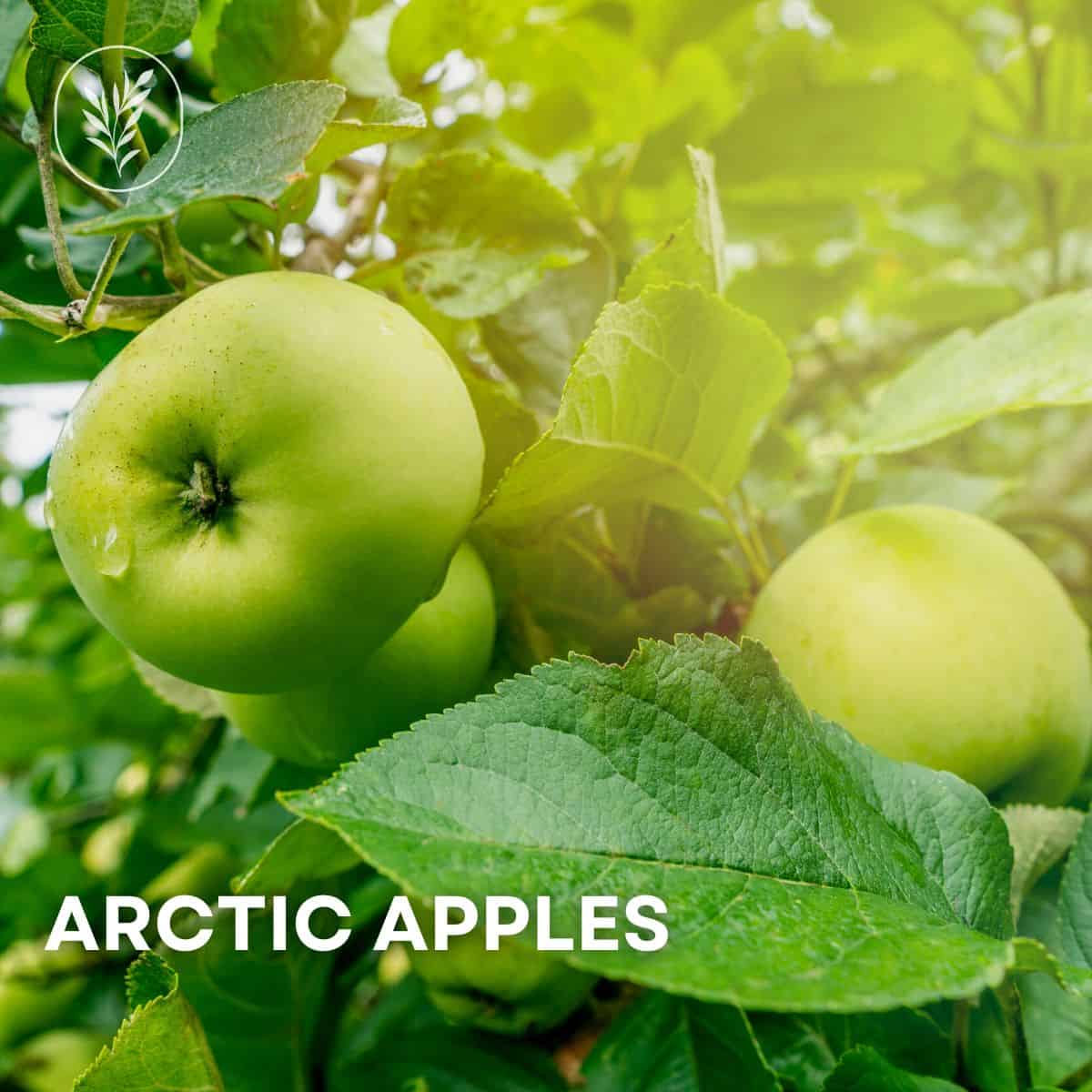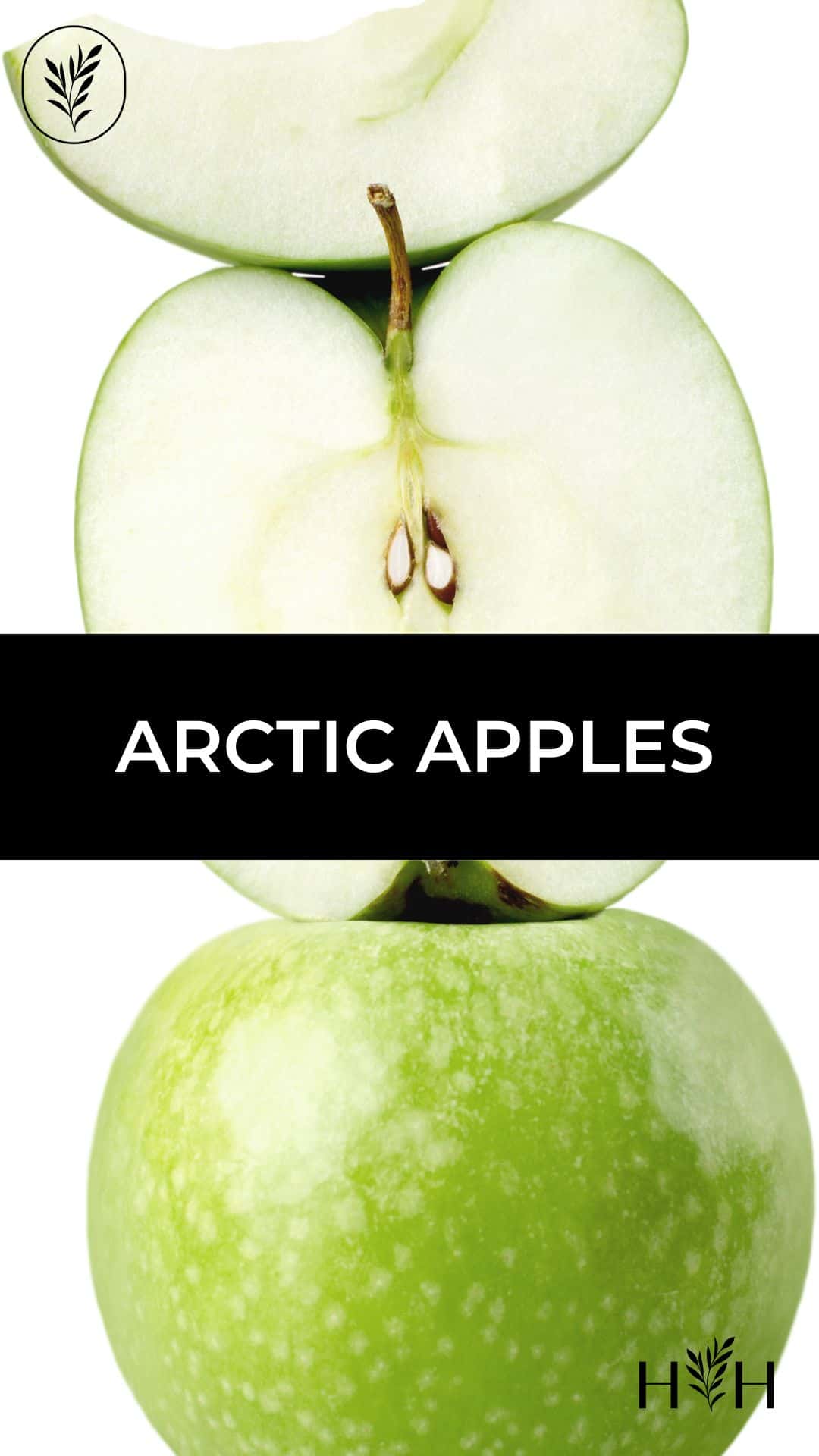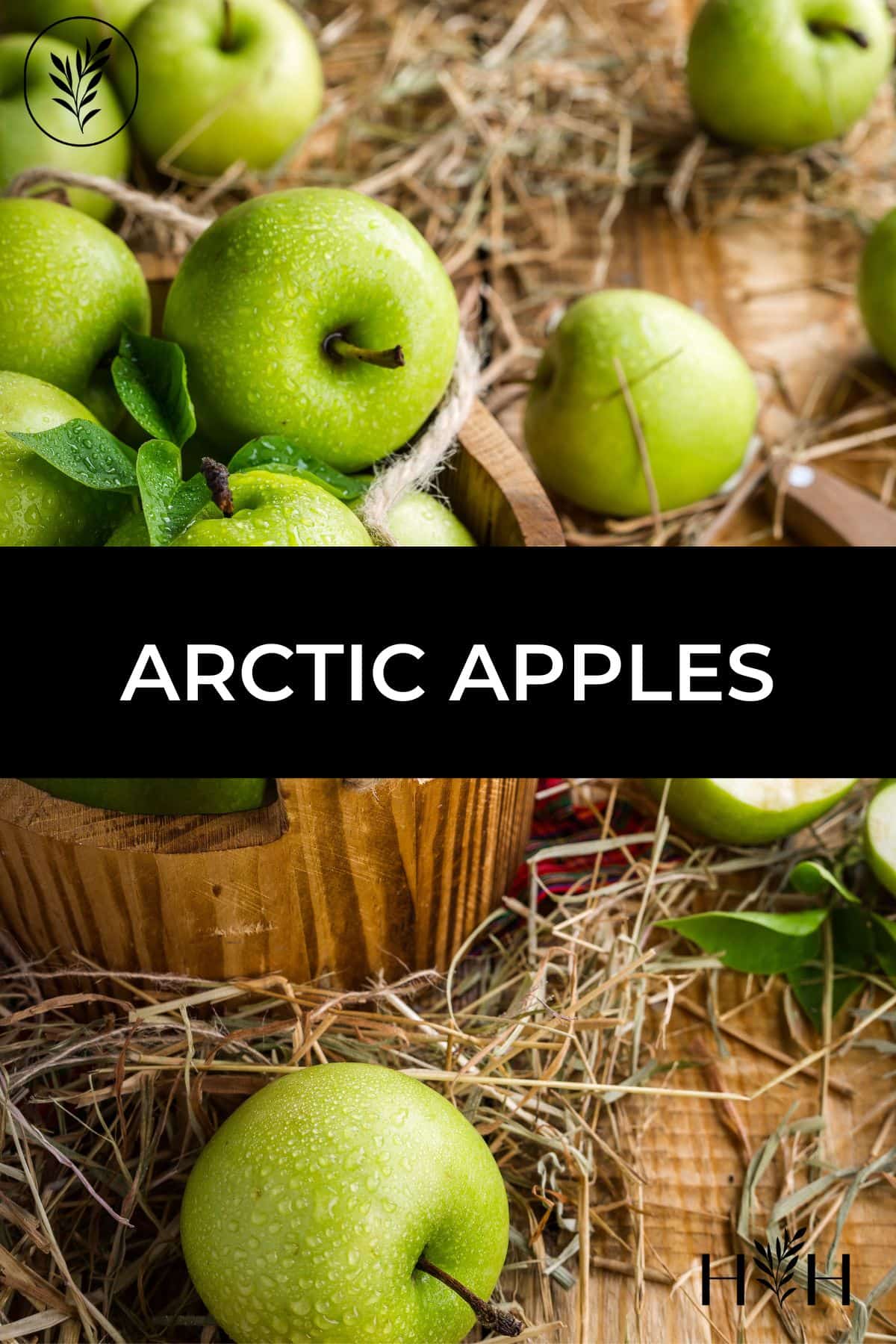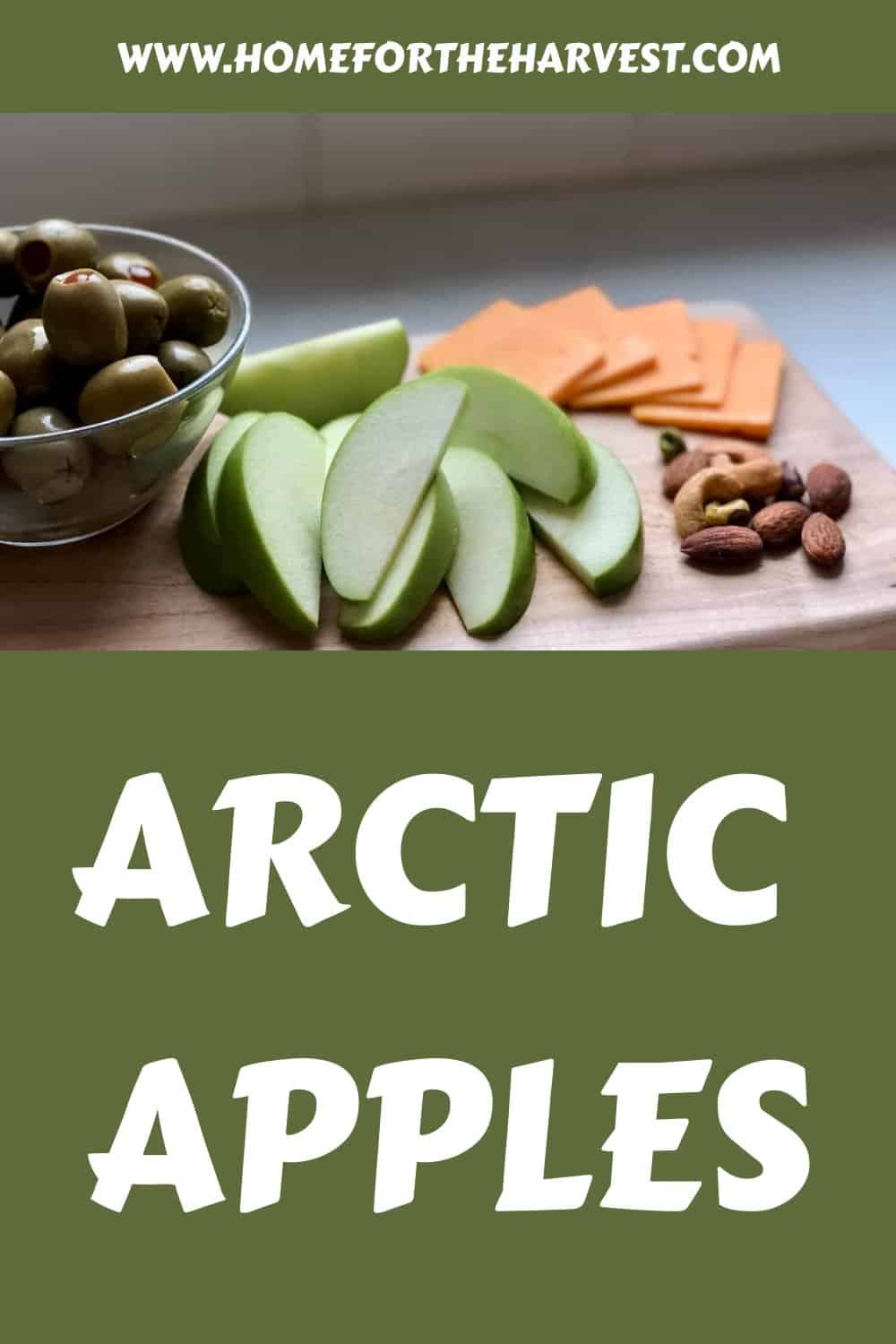Arctic® Apples is a brand that offers non-browning versions of popular heritage apple varieties. Arctic® Apples are genetically engineered with gene silencing to delay the browning of the flesh after the apple is cut.
Here are the three varieties of Arctic® Apples currently in production:
- Arctic Golden (GD743): GMO Version of Golden Delicious
- Arctic Granny (GS784): GMO Version of Granny Smith
- Arctic Fuji (NF872): GMO Version of Fuji
Arctic® Apples were created in British Columbia, Canada, and are mainly grown in Washington State, USA.
“Arctic apples not only make convenient snacks, but they also might be able to mitigate a major source of food waste.”
Arctic Apples: A fresh new take on genetic engineering, by Allison Baker
Arctic apple basics
Arctic® Apples were developed by Neal and Louisa Carter of Okanagan Specialty Fruits Inc., in British Columbia, Canada. Their company developed a genetic engineering process that delays the enzymatic browning of apple flesh. Arctic® Apples are now grown at Okanagan Specialty Fruits in Summerland, BC, as well as in Washington state.
“The Arctic Apple was developed by Neal and Louisa Carter from British Columbia, Canada.”
Farm Babe: Could the new Arctic Apple positively change the public’s perception of GMOs?, by Michelle Miller – Farm Babe, AGDaily
Arctic® Apples were developed in response to negative consumer behavior related to browning apple pulp. Kids and adults alike don’t want to eat apples that have gone brown, even if they were sliced just an hour before.
Non-browning apples have the potential to decrease food waste and increase the availability of pre-cut apple slices for consumers. Arctic® Apples have a 28-day shelf life, without the use (and taste) of preservatives like calcium ascorbate.
This breakthrough addresses a long-standing challenge in the fruit and produce industry by extending the shelf life and marketability of apples, making them more appealing for fresh-cut produce markets, and reducing waste.
Previous mitigation efforts for enzymatic browning slices were limited to preservatives, rather than delaying the browning itself using biotechnology. Because Arctic® Apples are non-browning, they don’t require the use of preservatives. These apple slices, therefore, require less processing and additives than conventional fruits.
Genetic engineering of Arctic® apples
Arctic® Apples are genetically engineered (they are GMO). Arctic® Apples were created with gene silencing using Okanagan Specialty Fruits’ patented biotechnology process to regulate the expression of Polyphenol Oxidase (PPO) genes.
Decreasing the activity of Polyphenol Oxidase (PPO) slows browning in fruits when they are damaged or cut. By specifically targeting and reducing the activity of at least two PPO isoenzymes within the apple plant, this genetic modification aims to maintain the fruit’s aesthetic appeal and nutritional quality for longer periods, especially after slicing or bruising.
“When an apple is cut (or bruised), oxygen is introduced into the injured plant tissue. When oxygen is present in cells, polyphenol oxidase (PPO) enzymes in the chloroplasts rapidly oxidize phenolic compounds naturally present in the apple tissues to o-quinones, colorless precursors to brown-colored secondary products. O-quinones then produce the well documented brown color by reacting to form compounds with amino acids or proteins, or they self-assemble to make polymers.”
Why do apple slices turn brown after being cut?, by Lynne McLandsborough (University of Massachusetts Amherst), for Scientific American
The PPO genes targeted are enzymes that cause pigmented oxidation when the apple’s tissue is damaged. Arctic® Apples have been developed to reduce gene expression of PPO, which leads to inhibited enzymatic browning of cut apple slices. The breeders introduced heterologous nucleic acid molecules to regulate PPO expression.
““GMO” does not mean scary. It does not mean Monsanto. It does not mean chemicals. It just means that scientists, farmers, and plant breeders today are able to do what they’ve already been doing for centuries, except that technology today allows them to do their jobs better and more precise than ever before.”
Farm Babe: Could the new Arctic Apple positively change the public’s perception of GMOs?, by Michelle Miller – Farm Babe, AGDaily
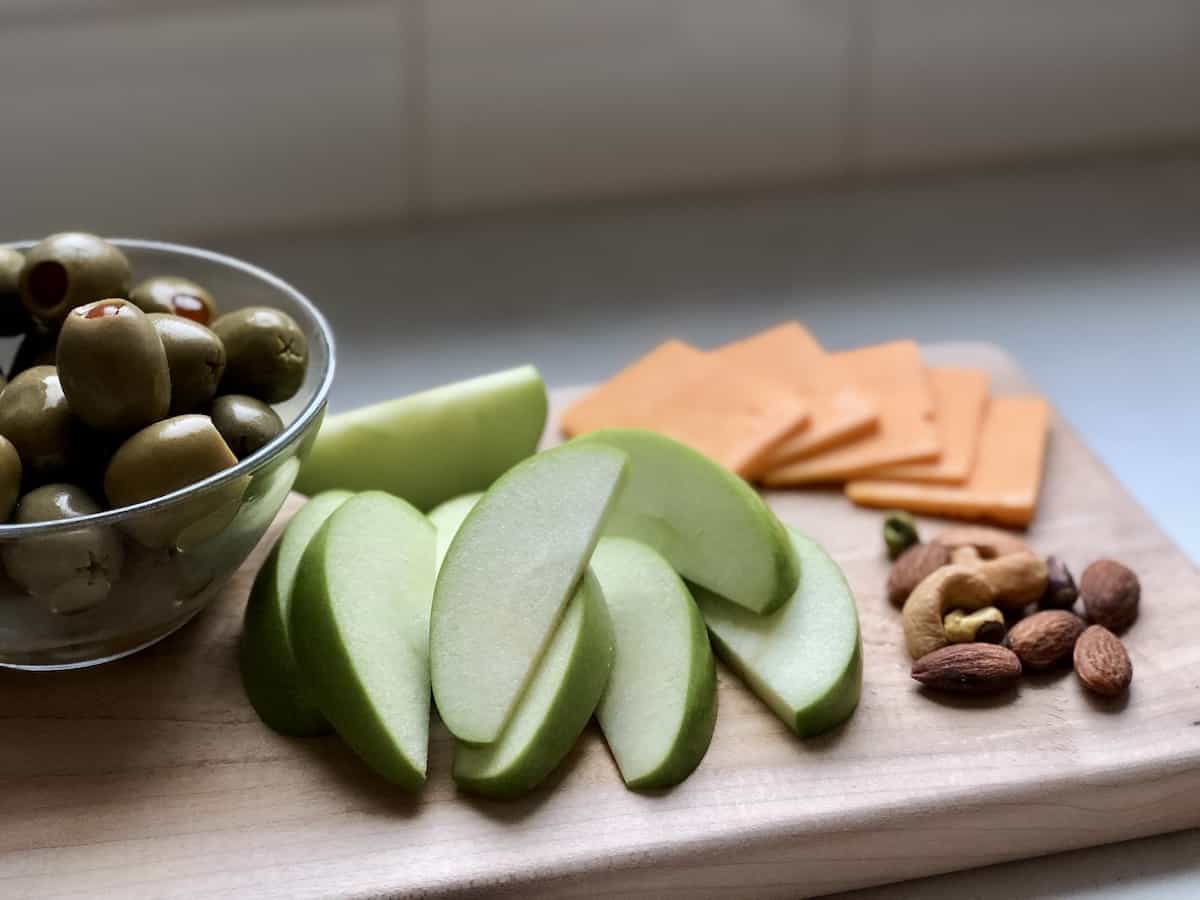
Flavor profiles
Arctic® Apples taste just like the conventional non-GE versions of the same varieties. This includes the classic Golden Delicious, tart-favorite Granny Smith, and beauty Fuji (perhaps the sweetest apple around). Click the links below to learn more about the taste of these classic types of apples:
- Arctic Golden – GE version of Golden Delicious
- Arctic Granny – GE version of Granny Smith
- Arctic Fuji – GE version of Fuji
The gene-silencing of the Arctic® Apple versions of these varieties means that pre-cut apple slices can retain more of their fresh look and satisfying crunch after packaging. This feature means that most Arctic® Apples are destined for sale as fresh apple slices, rather than as whole apples.
Growing regions
Arctic® Apples are grown in Canada and the USA:
- Okanagan Specialty Fruits, Summerland, BC, Canada
- Glacial Acres, Washington State, U.S.A.
Production and distribution are controlled by Okanagan Specialty Fruits. At this time, Arctic apple trees are not available for sale to the general public or to non-licensed growers.
Arctic® Apples are grown on tall, skinny “spindle”-type trees in massive blocks of long rows. These skinny trees produce more fruit per acre, have more access to sunlight for ripening, and are easier to care for and harvest. Most modern orchards are planted as super spindle blocks rather than spaced-out full-sized standard fruit trees. The rows between the trees are perfectly spaced to allow for machinery and bins to fit down the paths.
Modern orchards also employ smart technology to manage irrigation, reducing water usage for both environmental and economic reasons. There are also more and more orchards using protective netting over the trees to protect the developing fruit from birds, hail, and pests. Lastly, modern weather stations around the orchard collect data about temperature, humidity, and pests, helping growers make informed decisions.
Harvest season
Arctic® Apples are in season at the same time as the non-GMO versions of the same varieties.
Arctic Goldens are the first to be harvested, as Golden Delicious is an early-ripening apple variety generally harvested in mid-late September. Arctic Grannys are next and are a mid-season variety generally harvested in mid-late October. Arctic Fuji apples are also harvested in mid-late October, typically just after Arctic Grannys.
Buying Arctic apples
Arctic® Apples are sold in select grocery stores and convenience stores in the USA. Arctic® Apples are sold in pre-sliced bags. There are three sizes available:
- Individual Size: 5-ounce bags (142 grams) – about 12 apple slices, or one whole apple sliced
- Family Size: 10-ounce bags (284 grams) – about 25 apple slices, or two whole apples sliced
- Bulk Size: 40-ounce bags (1.1 kg) – about 100 apple slices, or eight whole apples sliced
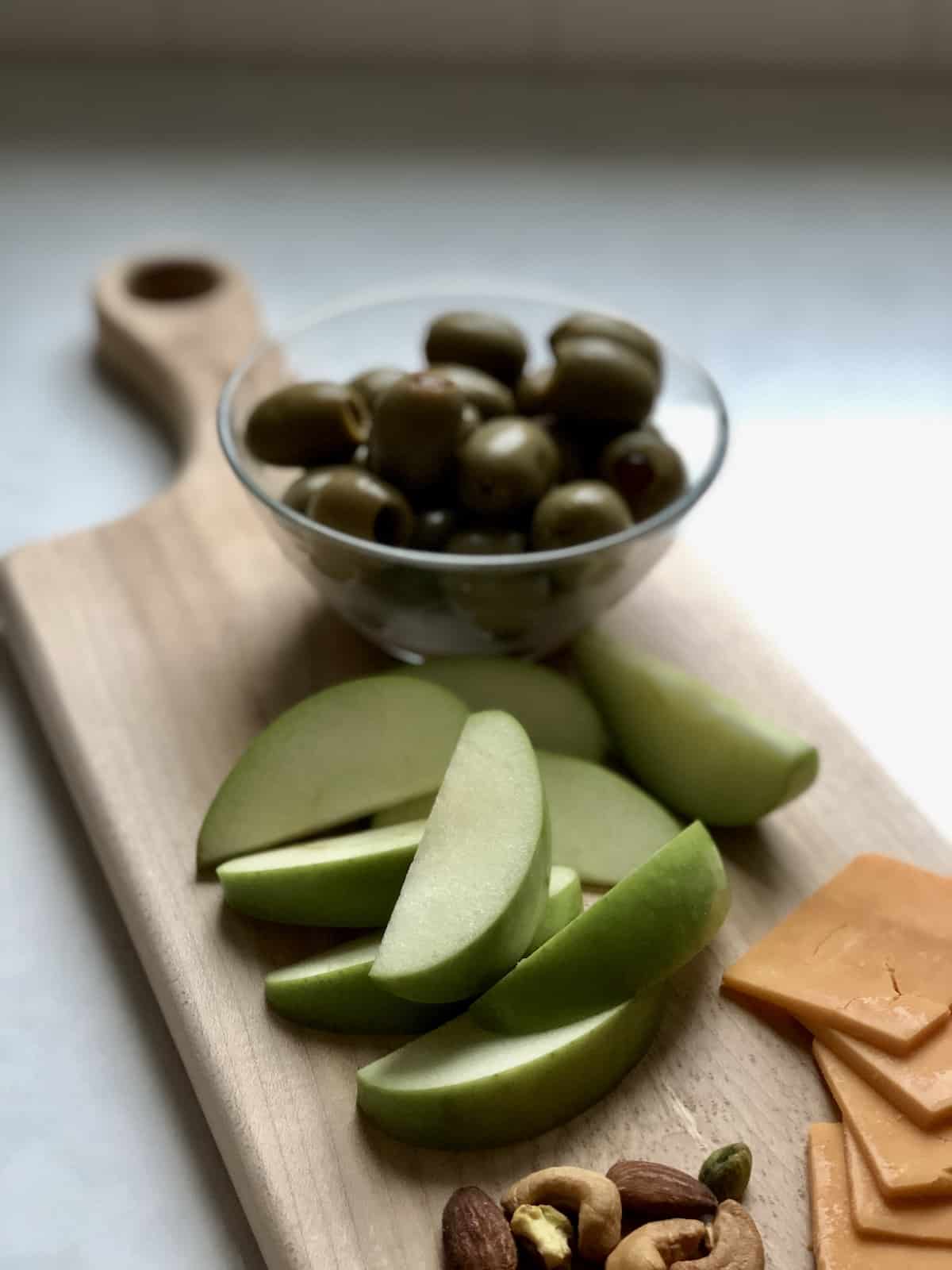
Recipes with Arctic apples
Arctic® apple slices are typically eaten fresh right out of the bag or used to reduce prep time in recipes that call for fresh apples.
Arctic Apple recipes
Here are some Arctic® apple recipes to try:
- Loaded Arctic® Apple Nachos
- Arctic® Granny Apple Smoothie
- Plant-Based Arctic® Golden Burger
- Arctic® Apple Ginger Muffins
- Apple Cranberry Holiday Stuffing
Find more ideas and information from Arctic® Apples directly:
- Arctic Apple Website: https://arcticapples.com/
- Arctic Apples on Instagram: https://www.instagram.com/arctic_apples/
- Arctic Apples on Twitter: https://twitter.com/arcticapples/
Substitutes for Arctic apples
Need a substitute for Arctic Apples in a recipe? Start with using the non-GMO conventional version of the apple variety:
- Golden Delicious – Arctic Golden
- Granny Smith – Arctic Granny
- Fuji – Arctic Fuji
If you require pre-cut apple slices, there are always the conventional types that have been preserved with calcium ascorbate.


